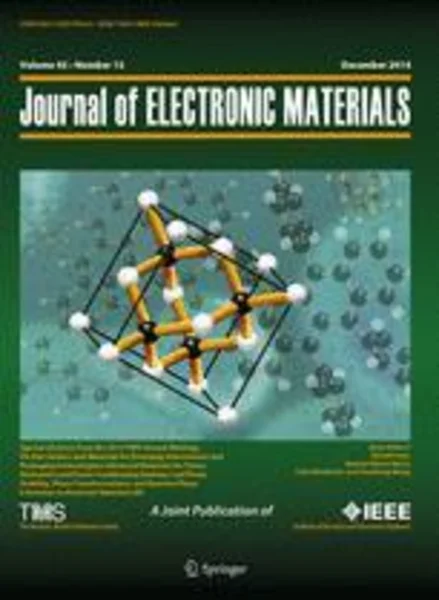-
thermal cycling reliability of sn-ag-cu solder interconnections—part 2: failure mechanisms
جزئیات بیشتر مقاله- تاریخ ارائه: 1392/07/24
- تاریخ انتشار در تی پی بین: 1392/07/24
- تعداد بازدید: 995
- تعداد پرسش و پاسخ ها: 0
- شماره تماس دبیرخانه رویداد: -
part 1 of this study focused on identifying the effects of (i) temperature difference (δt), (ii) lower dwell temperature and shorter dwell time, (iii) mean temperature, (iv) dwell time, and (v) ramp rate on the lifetime of ball grid array (with 144 solder balls) component boards. based on the characteristic lifetime, the studied thermal cycling profiles were categorized into three groups: (i) highly accelerated conditions, (ii) moderately accelerated conditions, and (iii) mildly/nonaccelerated conditions. in this work, the observed differences in component board lifetime are explained by studying the failure mechanisms and microstructural changes that take place in the three groups of loading conditions. it was observed that, under the standardized thermal cycling conditions (highly accelerated conditions), the networks of grain boundaries formed by recrystallization provided favorable paths for cracks to propagate intergranularly. it is noteworthy that the coarsening of intermetallic particles was strong in the recrystallized regions (the cellular structure had disappeared completely in the crack region). however, under real-use conditions (mildly/nonaccelerated conditions), recrystallization was not observed in the solder interconnections and cracks had propagated transgranularly in the bulk solder or between the intermetallic compound (imc) layer and the bulk solder. the real-use conditions showed slight coarsening of the microstructure close to the crack region, but the solder bulk still included finer imc particles and β-sn cells characteristic of the as-solidified microstructures. these findings suggest that standardized thermal cycling tests used to assess the solder interconnection reliability of bga144 component boards create failure mechanisms that differ from those seen in conditions representing real-use operation.
مقالات جدیدترین رویدادها
-
استفاده از تحلیل اهمیت-عملکرد در ارائه الگوی مدیریت خلاقیت سازمانی و ارائه راهکار جهت بهبود
-
بررسی تاثیر ارزش وجوه نقد مازاد بر ساختار سرمایه شرکت های پذیرفته شده در بورس اوراق بهادار تهران
-
بررسی تأثیر سطح افشای ریسک بر قرارداد بدهی شرکت های پذیرفته شده در بورس اوراق بهادار تهران
-
بررسی تأثیر رتبه بندی اعتباری مبتنی بر مدل امتیاز بازار نوظهور بر نقد شوندگی سهام با تأکید بر خصوصی سازی شرکت ها
-
تأثیر آمیخته بازاریابی پوشاک ایرانی بر تصویر ذهنی مشتری پوشاک ایرانی (هاکوپیان)
-
بررسی رفتار لرزه ای سیستم سازه ای قاب خرپایی با چیدمان متناوب
-
بررسی کاهش اثر ارتعاشات و امواج زمین لرزه بر روی سازه های اطراف با مدلسازی عددی
-
تاثیر استفاده همزمان سیر تازه یا قرص سیر با تجویز استات سرب بر میزان سرب در سرم و برخی از بافتهای بدن سگ
-
ga-gels: رویکردی نوین برای زمان بندی کارها در سیستم های محاسبات ابری با ترکیب الگوریتم ژنتیک و جستجوی گرانشی
-
بررسی آزمایشگاهی عملکرد طوق های لوزی شکل در میزان کاهش آبشستگی پایه پل
مقالات جدیدترین ژورنال ها
-
مدیریت و بررسی افسردگی دانش آموزان دختر مقطع متوسطه دوم در دروان کرونا در شهرستان دزفول
-
مدیریت و بررسی خرد سیاسی در اندیشه ی فردوسی در ادب ایران
-
واکاوی و مدیریت توصیفی قلمدان(جاکلیدی)ضریح در موزه آستان قدس رضوی
-
بررسی تاثیر خلاقیت، دانش و انگیزه کارکنان بر پیشنهادات نوآورانه کارکنان ( مورد مطالعه: هتل های 3 و 4 ستاره استان کرمان)
-
بررسی تاثیر کیفیت سیستم های اطلاعاتی بر تصمیم گیری موفق در شرکتهای تولیدی استان اصفهان (مورد مطالعه: مدیران شرکتهای تولیدی استان اصفهان)
-
بررسی رابطه و مشارکت بین نظام پیشنهادات و رضایت شغلی در سازمان صداوسیما
-
بررسی آثار تطبیقی عقد نکاح در فقه امامیه و حقوق ایران
-
بررسی پروژه طراحی فضای شهری حاشیه رودخانه بابلرود و موانع تحقق پذیری آن
-
تأثیر مدیریت ریسک اعتباری بر سودآوری بانک های تجاری (بانک های پذیرفته شده در بورس اوراق بهادر تهران)
-
influence of glass fibers on mechanical properties of concrete with recycled coarse aggregates




سوال خود را در مورد این مقاله مطرح نمایید :